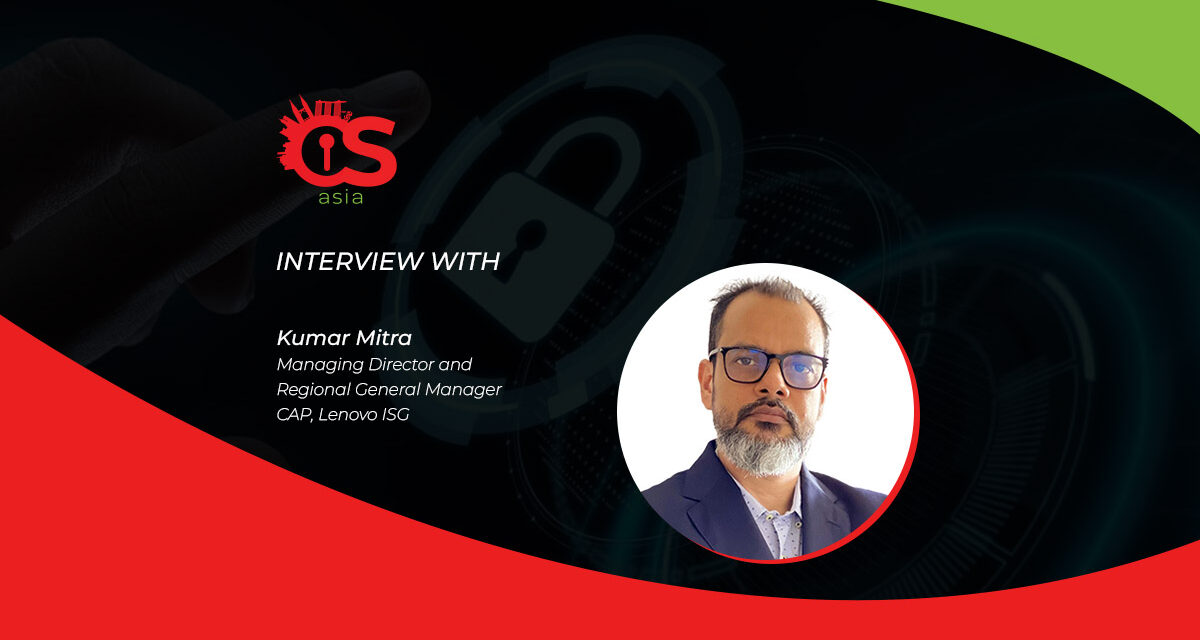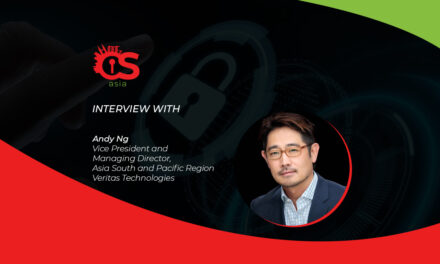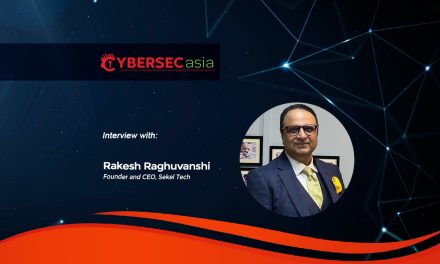In today’s regulatory environments, data privacy and security are of paramount importance. But what would be the best approach to ensure the best possible protection and compliance?
CybersecAsia believes Zero Trust is the way to go, and checks with Kumar Mitra, Managing Director and Regional General Manager – CAP, Lenovo ISG, on how organizations in Asia Pacific should go about embracing Zero Trust:
Why is Zero Trust important in today’s business IT environment?
Kumar: Zero Trust is of utmost importance in today’s business IT environment due to the evolving nature of cyber threats and the complexity of modern networks. In fact, studies have shown that 82% of organizations in the Asia Pacific & Japan (APJ) region were victims of cyberattacks in 2022, with 19% of these organizations experiencing four or more attacks in the same year.
Traditionally, security strategies relied on a perimeter-based approach, assuming that once inside the network, users and devices could be trusted. However, with the rise of sophisticated cyberattacks, such as advanced persistent threats and insider threats, this trust assumption has proven to be inadequate.
The concept of Zero Trust takes a more proactive and cautious approach to security. It assumes that no entity, whether internal or external, should be inherently trusted and requires continuous verification of users, devices, and network activities before granting access to resources. This means that every user, regardless of their location, needs to be authenticated and authorized before gaining access to specific data or systems.
In today’s business landscape, where remote work, mobile devices, and cloud services are prevalent, the traditional network perimeter has become blurred. Employees often access corporate resources from various locations and devices, making the network more susceptible to threats. Zero Trust addresses this challenge by focusing on identity and access management, ensuring that only authorized users with valid credentials can access resources, regardless of their location.
By adopting a Zero Trust model, organizations can significantly reduce the attack surface and limit the potential damage caused by breaches. It ensures that even if an attacker gains access to one part of the network, they still face multiple layers of security controls and obstacles before they can move laterally or access sensitive information.
Are there any industry sectors in Asia Pacific that you see Zero Trust as most critical?
Kumar: In the Asia Pacific region, we recognize that Zero Trust is especially critical in industries that handle sensitive data and are at higher risk of cyber threats. Specifically, the finance sector deals with confidential financial information and transactions, making it essential to ensure only authorized users have access to critical systems.
Government agencies also benefit greatly from a Zero Trust approach as they handle a wide range of sensitive information, including national security data and citizen records. By adopting Zero Trust security measures, governments can mitigate the risk of unauthorized access and protect critical infrastructure.
In the healthcare sector, patient data privacy is of utmost concern. Implementing Zero Trust thus helps healthcare providers protect sensitive medical records and personal information, thereby enhancing trust between patients and healthcare institutions.

Additionally, industries involved in research and development, such as technology and pharmaceutical companies, also possess valuable intellectual property and trade secrets. Zero Trust becomes vital to safeguarding these assets and preventing unauthorized access, especially in the era of increasing industrial espionage and cyber theft.
Why and how should organizations reimagine their Zero Trust approach in addressing the specific needs of today’s regulatory environments?
Kumar: Organizations should reevaluate their Zero Trust approach in today’s world, due to the growing importance of data protection and privacy regulations worldwide. In recent years, there has been a surge in data breaches and cyber threats, prompting governments and regulatory bodies to introduce more stringent laws to protect individuals’ data and hold organizations accountable for ensuring data security.
With the implementation of more stringent regulations by government bodies, organizations are required to adopt robust data protection measures and demonstrate a proactive approach to safeguarding sensitive information. Failure to comply with these regulations can result in severe penalties, fines, and reputational damage.
By conducting a comprehensive assessment, integrating compliance measures, collaborating with legal and compliance teams, conducting regular audits, and staying informed about regulatory updates, organizations can foster a secure and compliant cybersecurity framework that adapts to the ever-changing regulatory landscape.
What are some practical strategies and best practices for successfully implementing Zero Trust frameworks within organizations?
Successful implementation of a Zero Trust framework requires a thoughtful approach and adherence to best practices. A comprehensive assessment of existing infrastructure, data assets, and access controls is essential to identify vulnerabilities and areas that require improvement.
To ensure robust security, organizations should implement strong authentication protocols, multifactor authentication, and granular access controls. These measures guarantee that only authorized users can access specific resources, enhancing overall data protection.
Additionally, adopting the principle of least privilege is crucial in Zero Trust implementation. By providing users with the minimum access necessary to perform their tasks, the potential impact of a security breach can be significantly reduced. At Lenovo, we provide the Virtual Desktop Infrastructure (VDI), which enables enterprises to clone a desktop and host it on a central server, through which only authorized employees can access.
Continuous monitoring and behavioral analytics are another fundamental aspect of Zero Trust. Real-time monitoring enables the prompt detection of anomalous activities and potential threats, allowing organizations to respond swiftly and effectively.
Businesses can also opt for easy-to-use solutions and services to help build their zero-trust environment – for instance, our customized IT infrastructure solutions such as the ThinkSystem V2 servers with ThinkShield Security and award-winning ThinkSystem DM storage solutions with built-in automatic ransomware protection help businesses strengthen their overall security posture.
Last, but not least, educating employees about Zero Trust principles and the importance of their role in maintaining a secure environment is vital. Employee training enhances awareness and ensures that everyone is actively involved in upholding security protocols.

















